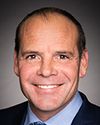The city of Trois‑Rivières has experienced significant economic growth in recent years.
In the knowledge field, the Université du Québec à Trois‑Rivières has been a leader in innovation and green hydrogen, for example. That's what encouraged the Quebec government to create the Vallée de la transition énergétique, including Mauricie and Centre‑du‑Québec, and to designate that region as an innovation zone with high growth potential. The city of Bécancour has one of the largest industrial parks in the country, which has made it possible for major industrial companies, like the GMs and Fords of the world, which I mentioned earlier, to set up there.
So we're experiencing a boom, which is why the City of Trois‑Rivières and the Quebec and Canadian governments recently provided funding to expand our airport terminal. Something's happening in our city. We have a port and an airport, and adding the train would help stimulate our economy even further.
Major investments have also been made in tourism. Many tourists come from around the world, from Europe in particular. Cruise ships dock in Trois‑Rivières, and Canadians visit the city, which has truly become a tourist destination.




